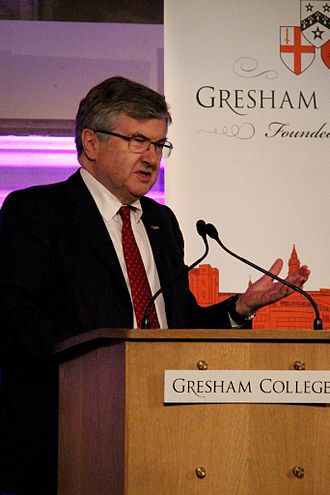
Postmodernism has been making its inroads into historical Jesus studies with what I think are most convenient results. This post is a plug for the old-fashioned rules for the proper way to do history. We can’t get any more old-fashioned than the nineteenth century founder of modern history, Leopold von Ranke, who has become a byword in many circles for doing history badly. It’s been a long time since I’ve discussed his contribution to historical studies and their relevance to biblical studies in particular so let’s do another post now. Previously I deferred to the Old Testament biblical scholar Niels Peter Lemche’s for the positives that Ranke still necessarily offers the modern historian. This time I’m inviting the modern historian (a specialist on Hitler’s Germany), Richard J. Evans, to take the floor.
We’re a bit late for the start of his talk because he’s already into the third significant contribution Ranke made for the modern study of history.
Thirdly, and perhaps most importantly, Ranke introduced into the study of modern history the methods that had recently been developed by philologists in the study of ancient and medieval literature to determine whether a text, say of a Shakespeare play or of a medieval legend like the Nibelungenlied, was true or corrupted by later interpolations, whether it was written by the author it was supposed to be written by, and which of the available versions was the most reliable. Historians, argued Ranke, had to root out forgeries and falsifications from the record. They had to test documents on the basis of their internal consistency, and their consistency with other documents originating at the same period. They had to stick to ‘primary sources’, eyewitness reports and what Ranke called the ‘purest, most immediate documents’ which could be shown to have originated at the time under investigation, and avoid reliance on ‘secondary sources’ such as memoirs or histories generated after the event. Moreover, they had to investigate and subject to the critical method all the sources relating to the events in which they were interested. They should not be content, as for example Gibbon had been, to rely on printed documents and chronicles generally available in libraries. They had instead to sally forth, as Ranke did, into the archives, to work their way through the vast unpublished hoards of original manuscripts stored up by the state chancelleries of Europe. Only then, by gathering, criticizing and verifying all the available sources, could they put themselves in a position to reconstruct the past accurately.
The application of philological techniques to historical sources was a major breakthrough. Ranke’s principles still form the basis for much historical research and teaching today. History Special Subjects in many British universities, for example, offer a basic training in source-criticism; students are examined on extracts or ‘gobbets’ from set documents and are expected to comment on them in terms of their internal consistency, their relationship to other documents on the same subject, their reliability and their usefulness as a source. Questions of authenticity and attribution continue to be vitally important in historical research. Forgeries, as the lamentable case of the ‘Hitler Diaries’ showed over a decade ago, are still regrettably common; outright falsification and doctoring of the evidence abound in printed collections of documents and other publications relating to subjects such as the origins of the First World War and the Third Reich. They are even more common in medieval history.
And we know, don’t we, just how prevalent forgeries were in the ancient world, too, right? Continue reading “The Basics of History — They’re Still the Basics”
